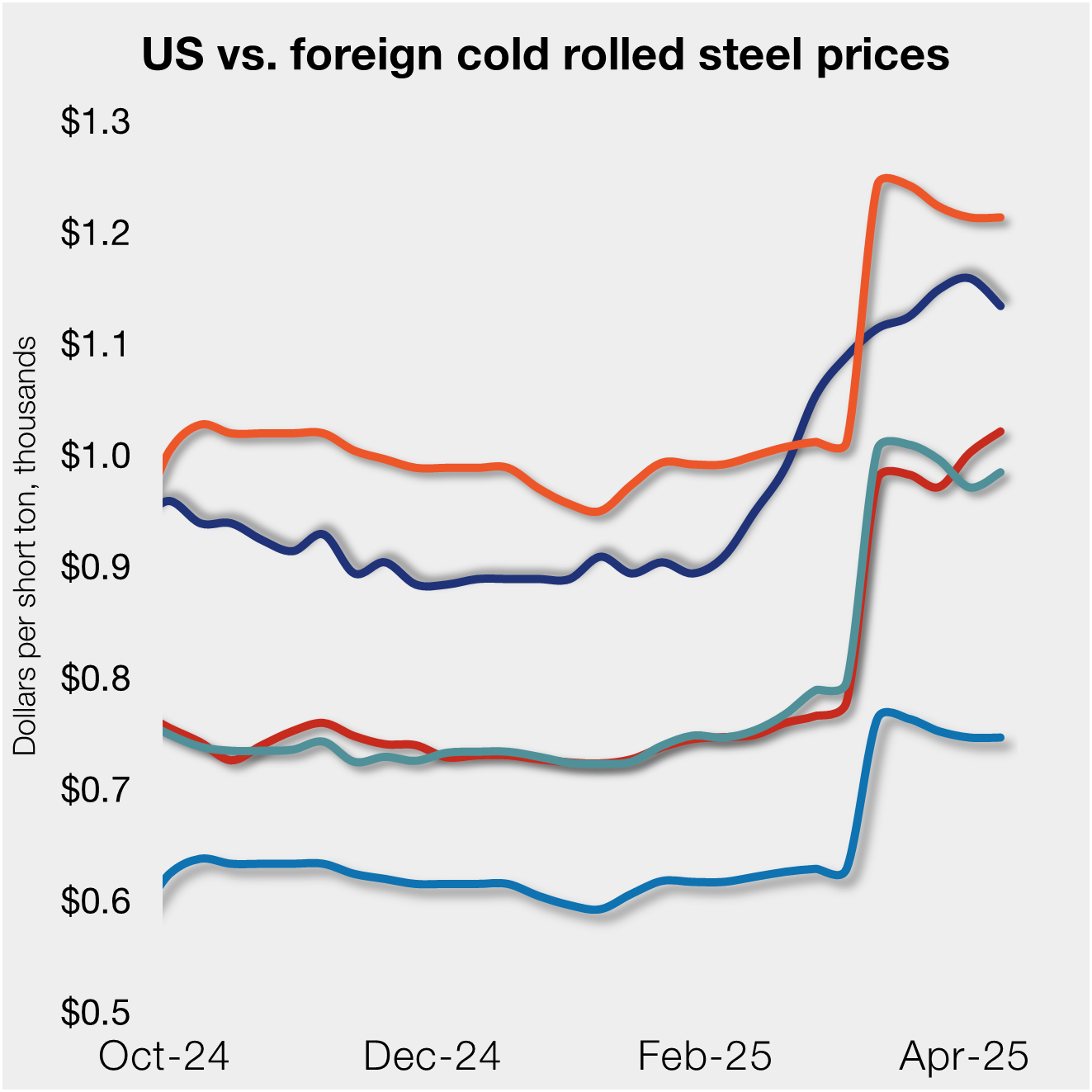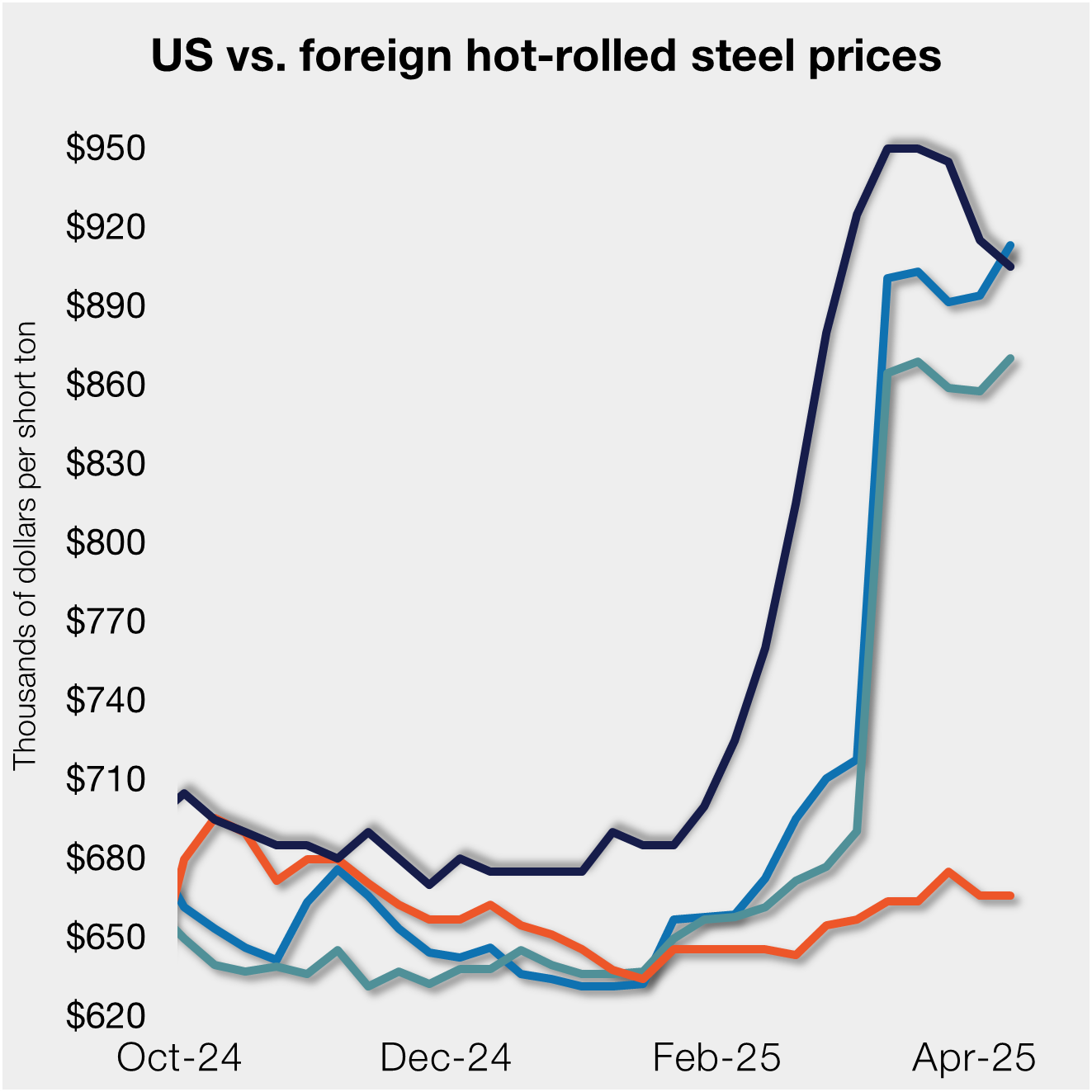Steel Products

SMU Perspective on Working from Home
Written by Tim Triplett
March 16, 2020
By Executive Editor Tim Triplett and Staff Writer Sandy Williams
Drastic measures to promote “social distancing” and stem the spread of COVID-19 will no doubt have unintended consequences. Often cited is the predicted baby boom in nine months or so as a result of so many professional couples “working from home.” Less obvious is the potential hit to the real estate market as companies find they need less space when employees sent home to work during the pandemic refuse to come back when the coast is clear. Once your staff has tasted the freedom of working from home, will they ever feel quite the same back in the office? Morale could become an issue. The coronavirus of 2020 may change your corporate culture, whether you like it or not.
Steel Market Update has long experience as a virtual organization with staff members working from home in Florida, Illinois, Ohio, Texas and Georgia. When I made the move from Metal Center News to SMU nearly three years ago, I traded a maddening 50-minute commute in Chicago traffic for a sublime stroll across the hall to my home office. I would quit before ever taking to the highway again to go to work.
Which is not to say that my transition was effortless. It took quite awhile for me to find a comfortable routine. The same discipline it takes to stick to each task and be productive in a home office makes it difficult to call it quits at the end of the day when there is always more to be done. We SMU staffers are often at our desks until 8 or 9 p.m. putting the finishing touches on each issue. That can put a strain on one’s homelife.
The employee is not the only one who must adapt to a work-at-home scenario. Spouses, children (and in my case a grandson) know you are just in another room and easily accessible. Distractions are inevitable. Sometimes it’s a welcome distraction to stretch my legs and spend 15 minutes building Lincoln Log cabins with the little dude while his grandma takes a break. But on deadline day, they have learned that “unless the house is on fire, I am not here!”
Dispatching employees to home offices will keep them safer in the short term and over the long term could save money, but it bears a cost in terms of team building and camaraderie. In my opinion, emails, even video conference calls, are no substitute for the personal contact that makes individuals feel like part of something greater than themselves. But the work-at-home trend is here to stay long after the coronavirus is gone. Young people certainly embrace the technology that makes working remotely possible, but I think the jury is still out on how they will adapt to the isolation. Case in point, check out all the millennials on laptops at your local Starbucks.

Sandy Williams, staff writer for Steel Market Update, shares the following advice from her home office experiences:
As a writer for Steel Market Update, I have spent the last seven and a half years working from home. Working remotely has both its advantages and disadvantages. On the plus side, you can adjust your schedule to work when you are most effective and focused while retaining the flexibility needed for life’s interruptions. The biggest downside for me, at first, was the lack of personal interaction with colleagues.
If you are asked to work from home during the coronavirus, you may miss working with others and find it difficult initially to stay on track. It is easy to be distracted by household chores, family members and even by close proximity to the refrigerator.
In order to stay focused, I make lists every day of what I need to accomplish, how long it is likely to take, and when it needs to be finished. For long-term projects, determine how many hours you will spend each day to tackle them. It’s difficult to know when to call it a day when working from home, especially if you are a workaholic.
Establish one place in your home as your workspace and make a practice of going there first thing in the morning. Check your email, make your lists, add any online events or calls to your schedule and then take in stride any disruptions to your carefully laid plans. There is nothing like having your dog go crazy at the approach of a deliveryman while trying to be attentive during a conference call or phone interview.
If you miss talking to colleagues, you can always call, text or email them—just don’t let that take over your day. Do you usually spend time calling friends or family members from work? Probably not, so don’t do it from your home workspace either. If you spend a few hours focused on work until you finish your daily tasks, you may be surprised at how much time you have left over. There is a lot of wasted downtime in most offices; now when your work is finished you are already home.
You can wear comfortable clothes, there is no commute and you may have extra time for yourself—what’s not to like?
Editor’s note: SMU’s take on working at home is not intended to make light of a serious problem, but to bring some perspective to the situation. The current state of affairs calls for some sacrifice, but nothing we can’t handle. So, stay close to home, for work and play, and do what it takes to keep yourself and those around you healthy. No reason for panic. This too shall pass.

Tim Triplett
Read more from Tim TriplettLatest in Steel Products

SMU flat-rolled market survey results now available
SMU’s latest steel buyers market survey results are now available on our website to all premium members. After logging in at steelmarketupdate.com, visit the pricing and analysis tab and look under the “survey results” section for “latest survey results.” Past survey results are also available under that selection. If you need help accessing the survey results, or if […]

CRU tariff webinar replay now available
CRU’s latest webinar replay on how Trump’s tariffs affect the global steel market is now available on our website to all members. After logging in at steelmarketupdate.com, visit the community tab and look under the “previous webinars” section of the dropdown menu. You’ll find not only this special CRU webinar but also all past Community […]

US, offshore CRC prices diverge
US cold-rolled (CR) coil prices declined this week, slipping for the first time since early February. Most offshore markets deviated, moving higher this week.

Construction growth slowed in March on tariff woes: Dodge
The decline comes after reaching a record high in January to kickstart the year.

Return of S232 zapped gap between US and EU HR prices, Asian HR remains cheaper
Domestic hot-rolled (HR) coil prices declined this week for a third straight week. Most offshore markets bucked the trend and gained ground. Uncertainty in the US market around tariffs, especially after “Liberation Day,” caused US prices to slip as buyers moved to the sidelines. It’s unclear to date whether the 90-day pause on the more […]
